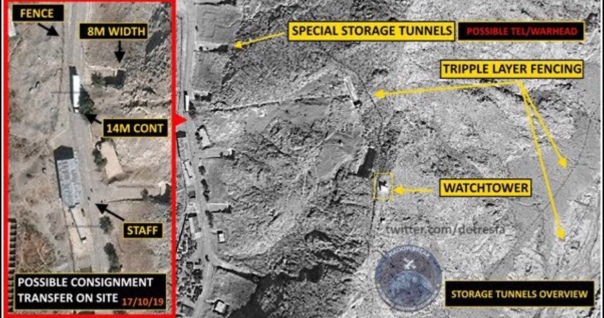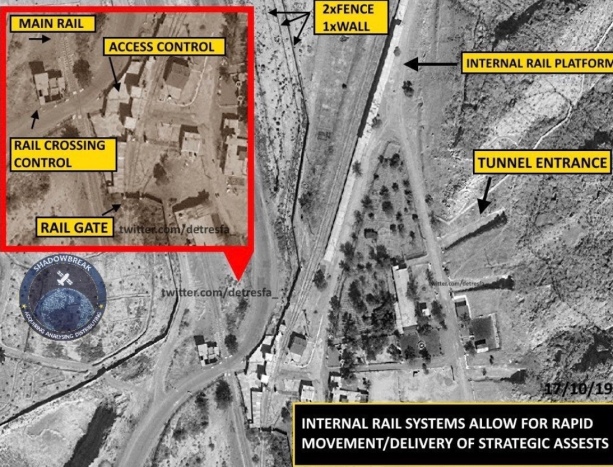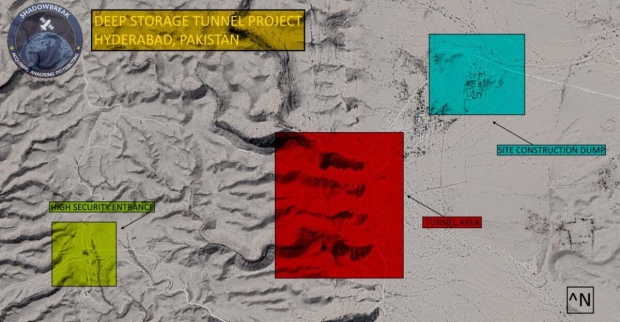5 December, 2019
When the Taliban was creeping closer to Islamabad in 2008-2009, Pakistan’s security dilemma was compounded by the discussion in the United States of a “Plan B” – to seize control of Pakistan’s nuclear weapons should the US deem fit. The Indian intelligence community was rife with stories of how the Pakistanis had started shifting their nuclear strike assets – from the North West Frontier Province (NWFP) to Sindh and Balochistan. Today, satellite images more or less confirm it.
Satellite imagery provided by Shadowbreak & detected by @detresfa reveals significant expansion of two high-security bases. One is Samungli, on the outskirts of Quetta in Balochistan; and the other is Manjhand, a few kilometres outside Hyderabad in Sindh. There is significant evidence to show that these are also storage sites for Pakistani nuclear weapons.

Image courtesy: Shadowbreak | ThePrint
The site in question lies between two military bases in Balochistan – the Samungli air base (home to the 23rd and 28th squadrons of the Pakistan Air Force, known to fly the F7 and JF-17 fighters); and the Khalid air base, believed to be a drone base, and within a highly protected heavy security quadrant. In spite of this, the additional security at this site is notable.

Figure 2 | Image courtesy: Shadowbreak | ThePrint
In Figure 2, notice the triple-layer fencing – the innermost concentric circle complete with watchtowers. In some areas, the distance between each fence varies. They are very tight and there is a significant distance between the three concentric circles, indicating a different threat perception at each perimeter. This triple fencing in a high-security area marks it out as a special zone, given that neither of the two airbases nearby (Khalid and Samungli) have triple-layer fencing despite major attacks there in 2014.
The inset shows two of the several deep tunnels of 8-meter width each – one has a 14-meter container truck parked outside with a fence close by and another has some ongoing construction work next to it. The rail network starts only at the end of the road leading up to the tunnels. This restricts the movement of large missiles on Transporter Erector Launchers (TELs) being stored here – including larger ones in Pakistan’s arsenal that are capable of hitting India and that require a 20-meter-long TEL. So, the rail network is perhaps for transporting both heavy and highly secure material.

Figure 3 | Image courtesy: Shadowbreak | ThePrint
A close up (Figure 3 inset) indicates that the rail network isn’t meant to serve the military bases, but is for whatever is being stored in the two tunnels.

Figure 4 | Image courtesy: Shadowbreak | ThePrint
However, it is the two clusters of hardened shelters at this site that stand out. The first cluster marked as Area of Interest 1 (AOI1) shows four hardened bunkers. The frontal access to each is blocked by a double deflection wall. First, the extreme narrowness of the access to each bunker – about 4 meters wide (extrapolated by the width of the fire tender seen in Figure 4). Second, a set of hazard pits filled with water. As explained by the folks at Shadowbreak, this means “whatever is in those bunkers is highly explosive”, which is to say a water source to be used by fire tenders.

Figure 5 | Image courtesy: Shadowbreak | ThePrint
Also, note the regular fire patrols on site (Figure 5), with the base having a dedicated fire station.

Figure 6 | Image courtesy: Shadowbreak | ThePrint
AoI2 (Figure 6) shows some very different and interesting features.
1) The hardened shelters here not only face the mountain ridge, but also have a single deflection wall in the front, at a greater distance from the access than AoI1 shelters. This indicates two things – first, larger vehicles can enter this shelter unlike AoI1; second, thinner deflection wall in the front shows a confidence in the mountains’ ability to thwart any oblique attack by smart munitions.
2) The only purpose of the thicker deflection wall placed at a strange angle seems to be to deflect any blast from the access control to the outside. So, even if the bunker is lost, access to the compound still remains secure.
In line with what we know of the Pakistani precautions to keep nuclear weapons dismantled and secure, the site seems to be an assembly for warheads. This separation plan involves the missiles/delivery platform being held by the Pakistan Army/Air Force, while the actual “physics package” and the fuse are held separately by two different officers within the Strategic Plans Division (SPD). The proximity to the airbases indicates this may be for fighter dropped nuclear gravity bombs. So, the tunnels store the disassembled bombs, with the fuse and physics package mating being done at AoI1, and the final mating with the delivery platform (possibly an air launched missile or a gravity bomb) being done at AoI2 with immediate access to a road for the airbase.
The fact that the rail platforms and infrastructure neatly separate the storage tunnels and AoI1 could also indicate that larger, heavier warheads for missiles are stored here, which after a rapid assembly, can be transported by rail to another location. Curiously, if this is indeed a base for Pakistan’s air dropped nuclear bombs, then the presence of JF-17s – and not the F-16s – acquires importance, as it would mean that the JF-17s either have or will be made nuclear capable.
No comments:
Post a Comment